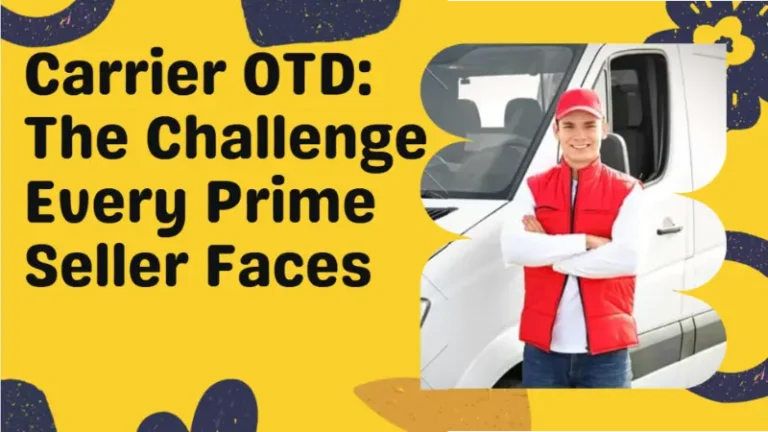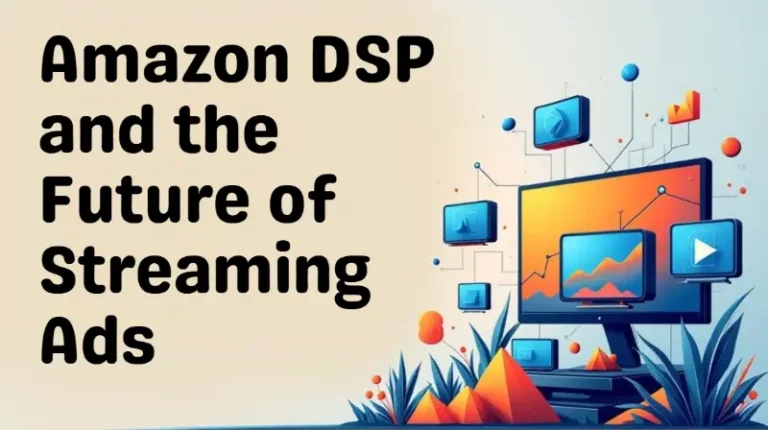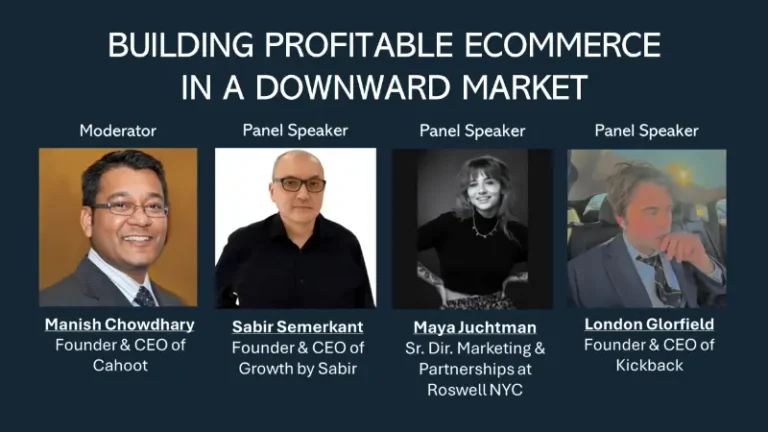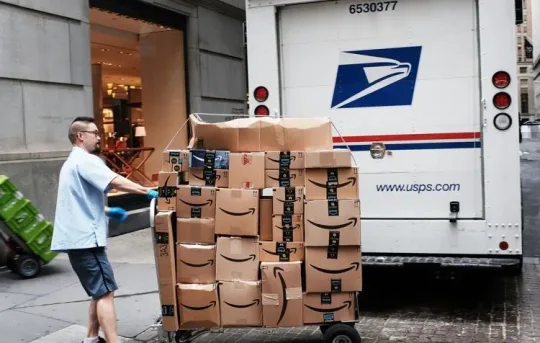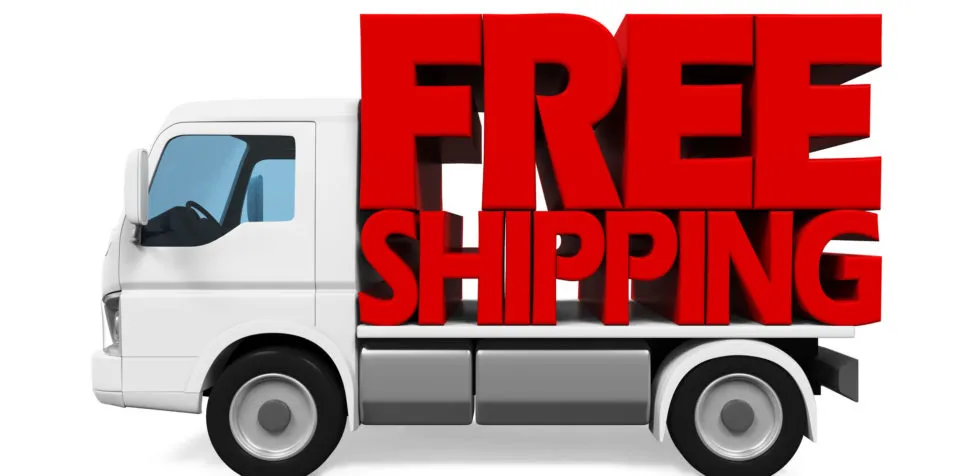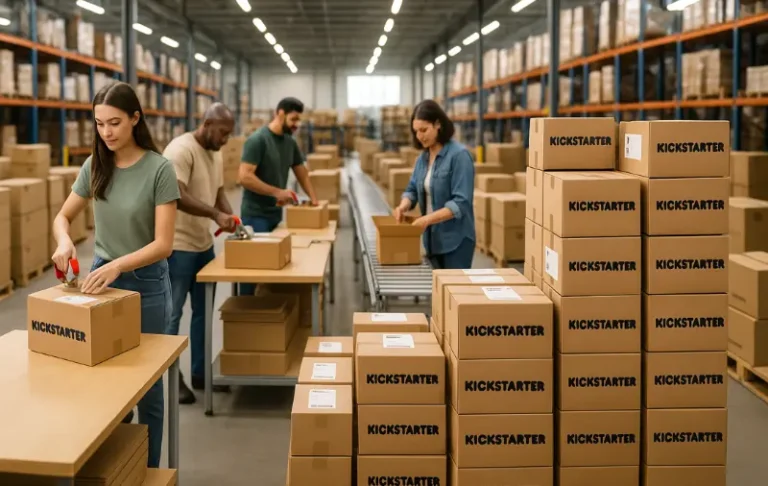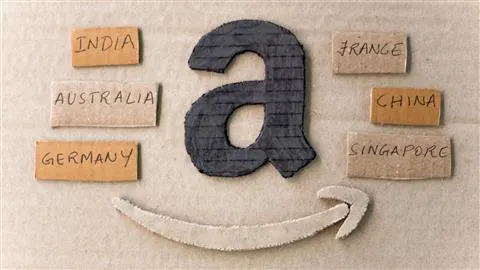Amazon Gives Brands Power to Delete Counterfeit Listings
In this article
Amazon.com has launched Project Zero, a program that enables brands to designate counterfeit product listings on the e-tailer’s site for removal. Amazon is providing each product with a unique code that can be scanned to determine whether a product is authentic or counterfeit. The online retail giant launched a new anticounterfeiting program, called Project Zero, that it says would better protect brands from scammers by letting them designate listings for removal, rather than going through a cumbersome reporting process with Amazon.
The company has been testing it with roughly 15 brands for a few months, and will now start inviting selected additional companies to participate. Amazon said it wants all brand owners to join the program eventually but declined to specify a timeline.
As part of Project Zero, Amazon also is including a tool that generates a unique code for each product unit that the brand can print onto existing packaging or attach onto items using a sticker. The codes can then be scanned to ensure a product’s authenticity when it enters an Amazon warehouse.
In shifting some monitoring duties and authority to brands themselves, Amazon is taking an unusual step. Other tech companies use outside contractors to help monitor their platforms but don’t generally let users remove content. Amazon, for example, has required brand owners to report suspected counterfeits to an internal team that would investigate and decide whether or not to remove them.

Turn Returns Into New Revenue

What does the future hold for Amazon sellers?
In this article
This is the million dollar question. Actually, it is a multi-million dollar question, as thousands of people have staked a claim in the success of Amazon’s seller marketplace, and many more are eyeing the potential of selling on Amazon and ready to make a move.
The goal was simply to get a better understanding of what an Amazon seller looked like: simple demographics like age, gender, location, but also at a deeper level, what factors helped the top sellers succeed?
Getting Started is Key!
The hardest part is getting started: finding a product idea, maintaining momentum, and ultimately getting it live on Amazon. If you can do that well, you have set yourself up for success. That is the exact path that every one of these successful sellers we surveyed took.

Turn Returns Into New Revenue

Both USPS and Amazon Experience Data Security Glitches
In this article
In the midst of the kickoff to the busiest shopping season of the year, news emerged that both the U.S. Postal Service and Amazon experienced data glitches that exposed customer information.
The USPS may have exposed the personal data of more than 60 million customers via a security hole, including access to information on when checks and other critical documents were set to arrive. Amazon meanwhile told an unknown number of customers their names and email addresses were exposed due to a technical error on its ecommerce site.

Turn Returns Into New Revenue

USPS Price Hikes on Jan. 27 to Cost Amazon More than $1 Billion
In this article
Amazon.com Inc.’s retail operating income could take a 5% hit from shipping cost inflation if the U.S. Postal Service’s proposed price hikes go into effect, according to calculations by Barclays analysts. The proposed uptick in shipping and mailing fees at the U.S. Postal Service could cost Amazon more than $1 billion in 2019, according to Credit Suisse, which cut its near-term estimates for operating profit on the e-commerce behemoth.
“As we roll forward the sensitivity analysis to 2019, we arrive at a potential incremental Shipping Expense range of $400 million to $1.1 billion range with the assumption that 40 percent to 50 percent of U.S. packages are shipped via the Postal Service,” analyst Stephen Ju wrote Monday. “Our math …suggests Amazon will have 5% lower retail operating income from this shipping cost inflation, if we assume there are no offsetting factors,” Barclays said. The changes would go into effect on Jan. 27, 2019.
“Specifically, the USPS shipping rates for small and medium boxes, typically used by e-commerce companies, are proposed to be increased by 10% and 5% respectively,” Barclays analysts led by Ross Sandler wrote. “[T]he price increases for packages suggested by USPS this year are higher than in prior years.”
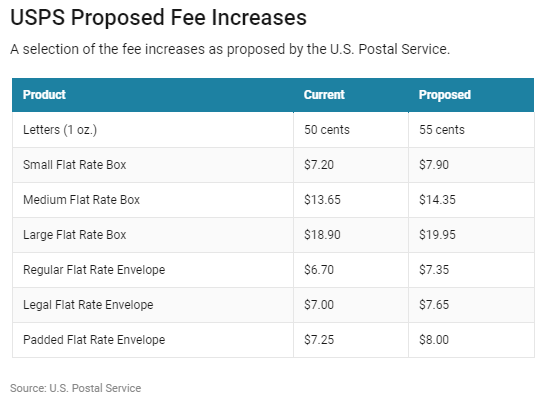
“If other Amazon shipping partners like UPS, FedEx, On-Trac, etc. raise their prices, which has happened in the past (but we are currently not factoring in), every 5% hike for last mile would weigh down operating income by an additional 3%, all else constant,” the note said.
President Trump said the USPS is Amazon’s “delivery boy” in a tweet earlier this year, and blamed the e-commerce giant for its billion-dollar-plus losses in the second fiscal quarter. However, the USPS said it’s actually government policy that’s hurting the group’s finances. The USPS said “legislative and regulatory changes” would be necessary for financial stability.
“To be clear, our current estimates already factor in [a] shipping cost increase by a modest level, consistent with prior years,” Barclays said. “However, the steeper increase proposed for 2019 could weigh further on Amazon’s FY19 profitability.”
Barclays forecast that Amazon shares could take a hit after third-quarter earnings if they are in line with guidance and forecast below expectations. And in the fourth-quarter, the $15 minimum wage hike will add about $310 million to expenses.
Amazon will already see declines due to the $15 minimum wage hike, analysts say. Barclays analysts think the minimum wage hike is just one of a few coming initiatives that could impact operating margin expansion.

Turn Returns Into New Revenue

Free Shipping Becomes a Blessing and Curse at Amazon and Target
In this article
Amazon.com Inc. and Target Corp. have opened the floodgates on free shipping. Web orders with the free service have increased 13% in 2018. Offer can boosts sales but wreaks havoc with profit margins.
Recent moves by the two retailers to eliminate minimum-purchase amounts for free shipping have boosted the share of online orders that get delivered gratis, according to data from retail analytics company DynamicAction. Orders with the free service included have risen 13 percent so far this year through Nov. 16, including an 18 percent spike in the week that began Nov. 5., when Amazon unveiled its offer.
Free Falling
Amazon and Target have eliminated shipping fees for online holiday orders
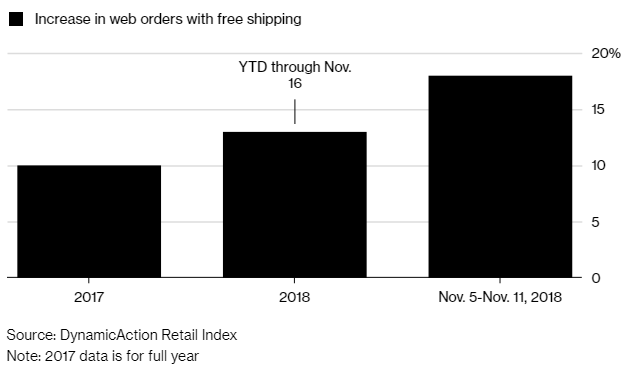
“Free shipping is the new normal,” DynamicAction’s Chief Marketing Officer Sarah Engel said.
While free shipping can entice customers to buy, it can wreak havoc with retailers’ profit margins, which are typically razor-thin already during the holiday quarter due to rampant discounts and increased marketing costs. Web orders that included some sort of promotion since the end of October have risen 13 percent from the same period last year, DynamicAction found. It also doesn’t help that transportation costs were already soaring this year due to a shortage of truckers.
Target is offering two-day free shipping from Nov. 1 through Dec. 22 on hundreds of thousands of items with no minimum purchase, while Amazon said on Nov. 5 that shoppers without Prime memberships need not buy at least $25 to earn free regular shipping, which typically takes five to eight business days.
Walmart Inc. has thus far declined to match the offers, sticking with its $35 minimum purchase requirement. The world’s largest retailer has suffered from narrowing gross profit margins in recent quarters, even as its online sales have grown.
E-commerce sales overall will jump 17 percent this holiday season, according to data tracker EMarketer, and account for about 12 cents of every holiday dollar spent. Amazon garners just under half of all online sales in the U.S., EMarketer said.
This article was written and published at Bloomberg by Matthew Boyle

Turn Returns Into New Revenue

How to Win in an Amazon Prime World
In this article
A 5% increase in customer retention can improve a company’s profitability by 75%, according to Bain research. Yet most retailers are more focused on acquisition and conversion than retention. Despite investing billions in this pursuit, ecommerce has created a “customer experience gap” for retailers unable to engage customers at key post-purchase moments. Brands are learning the hard way that lackluster engagement and an afterthought communication strategy is a guaranteed way to lose loyalty.
To address this important issue Pulse Commerce conducted mystery shopping at nearly 500 leading U.S. online merchants prior to the 2017 peak holiday shopping season. The result is a picture of true behavior rather than survey feedback, and benchmarking by product category for comparison to peers as well as to Amazon.

Turn Returns Into New Revenue

The Prime Effect
In this article
How Amazon’s two-day shipping is disrupting retail. The quest to offer fast, free delivery has triggered an arms race among the largest retailers.
Amazon is already making up most of the US ecommerce sales. However, they rely heavily on 3rd party sellers. These sellers experience major pain related to shipping cost and time. Fast shipping is now an expectation, but it is expensive for most sellers. Sellers often limit fast shipping to veru=y samll items or to local addresses. This limits their buy box opportunities.
Alongside life, liberty and the pursuit of happiness, you can now add another inalienable right: two-day shipping on practically everything .
Amazon.com Inc. has made its Prime program the gold standard for all other online retailers, according to surveys of consumers. The $119-a-year Prime program—which now includes more than 100 million members world-wide—has triggered an arms race among the largest retailers, and turned many smaller sellers into remoras who cling for life to the bigger fish.
In the past year, Target Corp. , Walmart Inc. and many vendors on Google Express have all started offering “free” two-day delivery. (Different vendors have different requirements for no-fee shipping, whether it’s order size or loyalty-club membership.)
Optimizing Prime
Amazon’s shipping infrastructure isn’t used just by Amazon. As shoppers who read the fine print know, it’s also available to its retail partners through its Amazon Marketplace. Of the top 10,000 sellers on Amazon—collectively representing about half of Amazon’s Marketplace revenue—at least 90% have one product in the Fulfillment by Amazon program, says Juozas Kaziukėnas, chief executive of Marketplace Pulse, a business-intelligence firm focused on e-commerce. Almost 70% use it to stock and ship at least half of their products, he adds.
Competitors Great and Small
Amazon’s nominal competitor in online retail, Walmart, also offers a marketplace for third parties to sell their goods; the big difference is, it doesn’t assist them with fulfillment—and forbids them from using Amazon’s fulfillment services.
Scale is essential. Mom-and-pop shops and even midsize retailers can no longer assume buyers will put up with getting their goods days later via the U.S. Postal Service. In response, startups are trying to aggregate enough retail customers that they can offer the all-important fixed rates for nationwide two-day shipping.

Turn Returns Into New Revenue

Amazon Will Spend $800M to Bring Free One-Day Shipping to Prime
In this article
At the company’s quarterly earnings call, CFO Brian Olsavsky disclosed that Amazon is working to shorten its promised two-day shipping on Amazon Prime to one day. It’s going to cost the company a lot of money, however.
At the company’s quarterly earnings call, CFO Brian Olsavsky disclosed that Amazon is working to shorten its promised two-day shipping on Amazon Prime to one day. It’s going to cost the company a lot of money, however.
Olsavsky said it would cost about $800 million, which will likely eat into Amazon’s bottom line in the coming quarters.
“We’re trying to take advantage of the fulfillment capacity and transportation capacity . . . that we have,” the CFO said. Amazon’s push for faster delivery has put a lot of pressure on other retailers to speed up their ecommerce order fulfillment.
As for a timeline, Amazon wouldn’t give too many specifics. “We expect to make steady programs quickly and through the year,” Olsavky said, but wouldn’t say whether it would be fully rolled out by the holidays.

Turn Returns Into New Revenue

Revolutionizing Order Fulfillment to Compete with Amazon’s Multi Channel FBA Operations
In this article
 21 minutes
21 minutes
Listen to podcast here.
Ecommerce Wizards Podcast – What Are the Benefits of Fulfillment Networks With Manish Chowdhary of Cahoot
The podcast episode is an interview with Manish Chowdhary, founder and CEO of Cahoot, the world’s first peer-to-peer order fulfillment services network. Cahoot provides ecommerce brands and retailers with best-in-class order fulfillment services across multiple warehouses in the US, Canada, Mexico, and others, similar to Amazon FBA, but with a unique business model. Most of the warehouses belong to other brands and sellers who join Cahoot as order fulfillment partners to monetize their excess capacity. By passing the benefits onto their clients, Cahoot is able to offer lower costs and one-day two-day delivery nationwide. The episode focuses on DTC (direct-to-consumer) versus Amazon FBA, and how to compete with Amazon’s multichannel operations. As an experienced entrepreneur with over 20 years of e-commerce experience, Chowdhary shares his insights on the challenges and opportunities of DTC, multichannel operations, and direct order fulfillment. The episode is sponsored by MageMontreal, a certified e-commerce company specialized in the Adobe Magento platform.
Guillaume Le Le Tual:
Hello, everyone. Guillaume Le Tual here, host of the Ecommerce Wizards podcast, where I feature leaders in e-commerce and business.
Today’s guest is Manish Chowdhary, who’s the founder and CEO of Cahoot, which can be found at Cahoot.ai. Today, we’re going to talk about DTC, so direct-to-consumer. So DTC versus Amazon, how to try with multichannel operations. Quite a challenge right now at Amazon, how do you compete with them? So before we get started, our sponsorship message.
Audio:
This episode is brought to you by MageMontreal. If a business wants a powerful e-commerce online store that will increase their sales, or to move piled up inventory to free up cash reserves, or to automate business processes to reduce human processing errors, our company MageMontreal can do that. We’ve been helping e-commerce stores for over a decade.
Here’s the catch. We’re specialized and only work on the Adobe Magento e-commerce platform, also known as Adobe Commerce. We’re among only a handful of certified companies in Canada. We do everything Magento related. If you know someone who needs design, support, training, maintenance, or a new e-commerce website, email our team at support@magemontreal.com or go to magemontreal.com. That’s M-A-G-E, montreal dot com.
Guillaume Le Le Tual:
All right, Manish, thanks for being here today.
Manish Chowdhary:
Well, Guillaume, thank you very much for having me.
Guillaume Le Le Tual:
All right, so before diving main topic, I like to always spend a little bit of time, so you can tell us briefly, like a minute or two, your background as an entrepreneur.
Manish Chowdhary:
Yes, thank you, and thanks again for everyone tuning in. My name is Manish Chowdhary. I’m the founder and CEO of Cahoot. I have over 20 years of e-commerce experience, involved with building one of the first e-commerce platforms. This is going back to the days before Magento, Guillaume. So I’ve been involved in e-commerce for that long. And following that, I built an order management, inventory management platform. It’s a full-service solution. So I have seen and worked with SMB merchants, even large enterprise, for nearly two decades. And now, I’m running Cahoot, which was founded in, a few years ago in 2018. I can tell a little bit about Cahoot, if you like.
Guillaume Le Le Tual:
Yeah, go for it, because it’s very unique, the product you have. I think it’s something brilliant as the idea that it really stands out. That if I’m thinking what kind of business do I want to create, is the kind of idea I hope to have. So go for it.
Manish Chowdhary:
Thank you, Guillaume. That is very kind of you. It is indeed innovation. It is very innovative what we’re doing, Cahoot is the world’s first peer-to-peer, order fulfillment services network. What that means is Cahoot has multi-dozen warehouses throughout the US right now, and soon to be global, including Canada, Mexico, and others. And essentially, we provide brands and sellers, brands and retailers, with best-in-class fulfillment services, similar to Amazon FBA.
Slash Your Fulfillment Costs by Up to 30%
Cut shipping expenses by 30% and boost profit with Cahoot's AI-optimized fulfillment services and modern tech —no overheads and no humans required!
I'm Interested in Saving Time and MoneyWhether you are targeting two-day delivery nationwide, in that case, Cahoot can distribute your inventory across multiple order fulfillment centers and pick the lowest-cost carrier to get the order delivered in one day, two-day, and we support that. We do this regularly for our clients who want Amazon Seller Fulfilled Prime (SFP). Which is, essentially, an Amazon Prime-like service, but for merchants who wish to do self-fulfillment. So that is what the service is for the ecommerce brands and retailers.
But there’s a very unique business model behind that, which I’m happy to share. Which is, most of these warehouses belong to other brands and sellers that have their own warehouse that they’re operating for themselves. And if they have excess capacity in that warehouse, they join Cahoot as an order fulfillment partner and they get to monetize that excess capacity for the very first time.
So if you know of a merchant, if you know of a seller who has a warehouse, let’s say 40, 50 or any size warehouse and they have sufficient space, vacant, that is going unutilized, you can come and apply to become a Cahoot order fulfillment partner.
And that’s where our capacity comes from, that allows Cahoot to beat the rates that allows Cahoot to, and pass them onto our clients, because it’s a win-win. It’s a win for the fulfillment partner, because they’re making extra cash, and that’s, of course, a win for the brand or the retailer, because they get lower cost by design, and that’s what makes Cahoot very unique and innovative.
Guillaume Le Le Tual:
All right, well, it is a brilliant system, because you’re more or less building an Airbnb or a Uber, but on the B2B side of things, to… everybody can use their excess capacity for warehouse. Because it’s always a problem. Within time, you buy hardware regardless if it’s additional server resources or if you’re buying warehouse space, you buy a full warehouse and maybe you’ll use half of it, two-third of it or whatever, and then it’s never optimized. And you plan on running out of warehouse space and you need to buy a second warehouse, and it’s never going to be a hundred percent capacity utilization. So it is quite brilliant.
There’s a lot of operational challenges, from [inaudible 00:05:20] point of view. I don’t know your business that would need to be solved to operate this, and it’s probably why you’re the first one that I have heard of to move forward with this kind of model. And well, you’re pulling it off, you’re making it work right now. So, for sure, I’m very interested to know more about this and we’ll see how you can perhaps explain it a bit more throughout the episode here. And it is directly with our topic.
So DTC versus Amazon, so direct-to-consumer versus Amazon, how to drive multichannel operations here, in the sense that well, shipping with Amazon, if you are selling on Amazon, is extremely competitive. Amazon has warehouse all across the country. We’ll ship way faster than you for most places. With the city, you can have your package same day, next day, more or less. But if you’re a small merchant or medium-size merchant even, you have to ship across the country, there’s no way to get the goods that quickly there.
Manish Chowdhary:
Yeah, you’re right, Guillaume. Because sellers, it’s very hard to pull this off. And Amazon-like order fulfillment is not easy. There’s a lot of operational complexity and so on, but Cahoot handles all that, just like Uber, where the rider, for example, is not trying to connect with the driver, trying to negotiate the price of the ride, trying to alert the driver when to come in and all of those. So Cahoot has created a fully-managed service for the seller. It’s super-duper simple, because they send the inventory to Cahoot order fulfillment centers and Cahoot takes care of everything from that point on.
And for our order fulfillment partners on the other side, just like I’ll continue to use that Uber analogy. As a driver, we’ve made it super-duper simple for fulfillment partners to fulfill orders on behalf of Cahoot, because we take away all the decision-making, all the complexity that would be associated, so that it’s not a distraction from the core business. And that’s all leveraging our technology, which is patented. We’ve got tons of experience doing this, and that is what makes Cahoot so special. So, we’d love to chat with ecommerce brands and fulfillment partners who may be interested.
Guillaume Le Le Tual:
So let’s say, so to be as clear as possible, where are we at so far with you be building this network and how competitive can you be with Amazon, let’s say, with the Prime same-day, next-day fulfilling that Amazon has? Or, is it per region of the United States? Or, how are things shaping up right now?
Manish Chowdhary:
Oh, yeah, I mean, this is a reality. I mean, Cahoot is one of the only fulfillment services networks of its size that offers, or offers Amazon’s Seller Fulfilled Prime (SFP). So I’ll use a client example. So we have a client called Cali’s Books. They are a leading ecommerce brand. They sell personalized children’s books. These are, imagine Cinderella in Spanish that also teaches the kid to read, and you can record voices on top of that. So that maybe it’s a grandfather reading the book to the kid and so on. So it’s a very, very special brand.
And they’ve been growing, doubling year over year. And prior to Cahoot, they were using a bunch of different services. But as we know, Amazon routinely changes the storage capacity for ecommerce brands, even the ones that have been selling on Amazon for a long time. And they needed access to Amazon Seller Fulfilled Prime (SFP), because that 150 million prime shoppers, that membership, is very crucial, because Amazon shoppers love the Prime membership.
So there’s a program called Seller Fulfilled Prime (SFP), where you have to achieve two-day and one-day delivery. The metrics are super-duper high, it’s very hard to meet those standards from Amazon. So Cahoot has placed this Cali’s Books inventory in six, seven, eight different warehouses throughout the country, in the US, from Southern California to Greater New York City area, to the south, where the Texas, and then in the upper Midwest and so on, and you can imagine. And then Cahoot processes orders, retrieves the orders dynamically in real time from all the leading channels, Amazon, Walmart, Shopify, eBay, and all of the others.
And then routes the order to the fulfillment center that will be the closest and cheapest, that can get the order to the customer within the promised SLA, which includes, in many cases we need, as part of Seller Fulfilled Prime (SFP), you need to achieve at least 20% of your orders must achieve one-day delivery, not just two-day. So the bar is really high and we’ve be doing exceedingly well. This ecommerce brand is doing really a fantastic job on execution and Cahoot is their primary order fulfillment partner. So that’s just to give you, by way of an example how this all this all thing works.
Looking for a New 3PL? Start with this Free RFP Template
Cut weeks off your selection process. Avoid pitfalls. Get the only 3PL RFP checklist built for ecommerce brands, absolutely free.
Get My Free 3PL RFPGuillaume Le Le Tual:
Right, okay. And you’ve made your own study in this regard. If you have, regardless of which e-commerce platform, the Magento, a Shopify or something, versus selling on the marketplace, what the brand gives up, what the brand lose if they’re selling on the marketplace, or what they win, and how do you push back or fight back as a smaller brand versus the Amazon Marketplace.
Manish Chowdhary:
Yes, it is well understood, well known that marketplaces are growing faster than DTC sites. And I put marketplaces, Amazon, Walmart, eBay, Best Buy, Target Plus, all of these are marketplaces, because consumers love marketplaces. They trust the marketplaces, because the marketplaces offer a diversity of product. There’s a very large selection, and because it’s also competitive. Because multiple people are selling the same product, it creates a competition for the sellers to put their best foot forward, which means lower prices.
Not only do the customers get a large selection, a very competitive price. And then finally, where marketplaces really win is in shipping and order fulfillment. Because marketplaces, in order to get ranked high on, let’s say, Amazon, you not only have to offer a great price in order to win the buy box, but you also need to provide competitive shipping. Of course, if you’re using FBA, then FBA will target the Prime, one-day, two-day delivery. But if you’re shipping on your own, your shipping offer has to also be very competitive in order to rank high, which is where marketplaces shine.
And most DTC brands do not do that good of a job, and regardless of the platform that they operate, whether Magento or Shopify. We did a full study of top 50 DTC brands on Shopify and BigCommerce, and compared their offers to the ones on Marketplace. And I’m happy to share more if your audience is interested.
Guillaume Le Le Tual:
Yeah, sure. So what key findings did you have with that study?
Manish Chowdhary:
Yeah, so we actually studied the top 50 brands to our top 50 sites on Shopify and BigCommerce, and then looked for the same identical product on Amazon and Walmart marketplaces. And what we found, Guillaume, is that 60% of the time, 60% of the time, the products are found cheaper on marketplaces than the brand’s DTC site. And that is just one finding. Of course, on a marketplace there could be other sellers, resellers potentially selling.
But from a consumer perspective, if I want to buy a certain product, as long as it’s authentic, I really don’t care who’s selling it, because I want the best price and I’m protected, because Amazon ensures that my payment information, all the other personal information is safe. So, there’s a clear trend that marketplaces are performing better on prices.
Now, we also studied the shipping behavior on these marketplaces, and we found that three out of four times, you can not only get the products cheaper, but you can also get it faster on marketplaces than on the DTC site. So 73% of the time, you’ll get the product delivery faster, let’s say, on Amazon and Walmart than on the DTC sites. So clearly, the DTC sites have a lot to do in terms of catching up, if they want to compete with the Amazon and Walmarts of the world.
Guillaume Le Le Tual:
Agree with you. So more selection, cheaper, faster. And also, something that we take for more or less granted on many marketplaces and many sites, just an estimated date of arrival, there’s a lot of private website that don’t give you that option. So you’re like, okay, I’ll check out, but when do I get it? Do I get it in a week, two weeks, in one day, in two day? If you don’t offer that estimated date of arrival, I mean, that can lose your sales right there. I remember myself as a consumer sometime not placing the order, because I need to know when I get it, because I need it for a specific date for whatever, an event or something. So that does matter, for sure.
Manish Chowdhary:
Yep. You’re a hundred percent right. We call it date-certain shipping. And if you don’t, if you’re just putting up things like four- to seven-day delivery or two- to three-day delivery, the consumer cannot do that math or doesn’t want to do that math. I don’t know what that means, four- to seven-day delivery. Does it include weekends? When will the product ship? Is it counted from today? Is it counted from tomorrow? What’s your processing time? All of those.
So that’s another clear advantage, as you rightly said, that individual DTC sites, most of them do not offer that level of what we call visibility into “When will my product arrive if I pick this option?” In addition to, of course, marketplaces reward free shipping. So any seller that’s offering free shipping will have an edge on marketplaces. Of course, there’s no such body to govern on your DTC site, because you’re making the rules. But keep in mind that the winds of change are happening, and brands and retailers, they need to get serious about offering and leveling that playing field if they want to compete on their DTC sites.
Scale Faster with the World’s First Peer-to-Peer Fulfillment Network
Tap into a nationwide network of high-performance partner warehouses — expand capacity, cut shipping costs, and reach customers 1–2 days faster.
Explore Fulfillment NetworkGuillaume Le Le Tual:
Yeah, exactly. Okay. And the model that you propose as a solution here, say, “Hey, let’s all group together, let’s band together. Let’s create a power of distribution and network by creating alliance with people that were previously not aligned together, not coordinated together.” So you’re coordinating the uncoordinated, so to speak, building a network, that then you can even compete with Amazon’s shipping and so on. Nothing’s perfect anymore. So there’s positive and negative. So we heard a lot about positive. What’s the downside of this approach or challenges or issues that someone might face?
Manish Chowdhary:
Well, I mean, ensuring quality is always a challenge in a warehouse, even with Amazon Prime. I’m a Amazon Prime subscriber in the US, and we, my family and I, we order quite a bit of stuff. And we know that Amazon Prime routinely fails on its delivery promise, even though they say, okay, the product is going to arrive, let’s say, on a Friday or Saturday. Many times, it doesn’t show up till Monday. But I know behind the scenes, Amazon is working feverishly to ensure that those promises are met.
And so, likewise, for Cahoot, the problems are very similar, that holding our order fulfillment partners and warehouses strictly accountable, which Cahoot does a fantastic job. My team is always on top of it, ensuring that products are delivered defect free, meaning product goes to the right customer at the right time. And of course, we need to work with carriers, UPS, FedEx, USPS, and many other regional carriers. Sometimes, they screw up, and it happens. Products do get damaged in transit, for no fault of the carrier and so on.
So, those are all the things that impact customer experience. Because the customer may or may not be privy to all that information that, hey, did the UPS damage the product or was the product damaged at the warehouse? Did the product come damaged from the factory in China to begin with? Because we can’t see all that. So the problems are real, but Cahoot maintains a very, very high standard of accountability and only lets the best in the business join as order fulfillment partners. And that’s why we have a very strict vetting process to make sure that we are only bringing in the best and holding them accountable every single day.
Guillaume Le Le Tual:
Even Amazon with all their, I don’t know how many millions or billions they’ve invested in robotics, probably billions. So, for sure, actually billions. They lose packages, they lose inventory. I speak with so many merchants that are selling on Amazon, and yeah, you have to claim lost merchandise from the Amazon warehouse, that Amazon has no clue. They’ve misplaced your package. So that happens everywhere, no matter how much AI and robotic you put in place, and especially the Amazon warehouse.
It’s messy, it’s not sorted out, alphabetically or numerically. The robot knows where it is. So if the robot goes, pick the package there and it’s not there, you’re screwed. Package is lost in chaos, basically. So that happens everywhere, that that’s for sure. And the other important thing to remember when you’re talking your own shop or direct-to-consumer versus selling on marketplaces, on marketplaces, you do not own the relationship with the customer. You do not own your customer’s list.
Somebody buys from you from Amazon, but you don’t know who is buying from you. You cannot send them an email and a text message, and you cannot market to them after, do some remarketing and so on. So this is huge, because you’re losing the ability to build an asset, which is a customer base. So it’s really like a money transactional relationship with Amazon. You say, “Thank you for the transaction. Thank you for helping me grow my business,” but this could dry out and I don’t own the relationship with the customers.
And very critical point to keep in mind, to always diversify away from marketplaces so that you can own your own customer list and your own relationship with customer, that you can send texts and emails to. So, to wrap up with this topic here, anything else top of mind that you think that merchants should know about how to drive in this kind of multichannel operation and DTC versus Amazon?
Manish Chowdhary:
Yeah. In summary, on this topic, Guillaume, I would urge every seller to target an Amazon-like order fulfillment. And I know that many sellers that I speak with, sometimes they’re not fully sold on the idea, because many of them will say, “Oh, my customers don’t demand it.” No, of course they don’t. They’re not going to come and tell you that, they just going to go elsewhere. They’ll buy it on Amazon, they’ll buy it on other places.
I think, especially with… Amazon just recently launched this program called Buy With Prime, which I know we will cover later on, either in this podcast or another session. The consumer expectations are not getting any reduced or is not getting tempered. If anything, customers want their products faster and they want their products free and fast shipping. And solutions exist. I think sellers and brands and retailers should not think that they cannot do it affordably.
I would invite them to come talk to Cahoot. We can do some analysis, we can tell you. And if there are merchants who have warehouses, whether it’s Canada or in the US, that have spare capacity, that run a tight ship, I’ll encourage them to also contact us, if they’re looking to make some extra cash. So, the world is moving to distributive order fulfillment. My parting thoughts is that everybody should embrace it, because if you’re not, you’re going to find yourself in a tight spot sooner than later.
Guillaume Le Le Tual:
Right. Well, thank you for sharing all that information, Manish. If somebody wants to get in touch with you, what’s the best way?
Manish Chowdhary:
Well, hop over to cahoot.ai, that’s www dot Cahoot, singular, dot AI and fill out the contact us form. And if you want to connect with me directly, please find me on LinkedIn. I’m very active. Just search for my name and Cahoot, that’s C-A-H-O-O-T. And please connect with me, message me. I’d love to chat with you.
Guillaume Le Le Tual:
Awesome. Well, thanks for being here today, Manish.
Manish Chowdhary:
Thank you for having me.

Turn Returns Into New Revenue

How to Prepare for Amazon Prime Day: Order Fulfillment Options and Beyond
In this article
 12 minutes
12 minutes
- Understanding Amazon Prime Day
- Preparing for Prime Day
- Optimizing Your Listings
- Marketing and Promotion
- Order Fulfillment Options Offered by Amazon
- Advantages of Using Amazon for Order Fulfillment
- Drawbacks of Using Amazon for Order Fulfillment
- Advantages of Using a 3PL for Order Fulfillment
- Drawbacks of Using a 3PL for Order Fulfillment
- Conclusion
- Frequently Asked Questions
Typically, peak shopping season begins late in the year for the US – during Thanksgiving, Black Friday, Cyber Monday and the Christmas holidays that follow. Elevated order volumes during these times occur for obvious reasons; these are festive occasions, and there’s lots of shopping people need to get done. In recent years, all of those occasions trail behind two days in July – Amazon’s Prime Day, known as Amazon’s biggest deal event.
Prime Day represents an opportunity to get in front of many buyers – but especially the young consumer whose purchasing power and influence continues to grow all the time.

Customers do not shop on Prime Day with the intention of gifting things to their loved ones for a festive occasion – rather, it is about the thrill of the treasure hunt, where many products are available at sharp discounts and there are deals which may not come around again. Forbes reported that 48% of Prime Day shoppers make purchases they never actually planned for – largely driven by the fear of missing out on a great deal.
However, as an online merchant, if you’re expecting people to only be shopping on Amazon, you’d be wrong – Forbes goes on to say that as many as 58% of people compare prices on other websites before checking out on Amazon. And why wouldn’t they? Many of Amazon’s competitors, such as Walmart and Target, now run their own competing programs at the same time as Prime Day.
Many of these competing programs center around the premise of free and fast “Prime-style” shipping – like Walmart’s TwoDay and ThreeDay programs.
While the surge in order volumes means an opportunity to acquire new customers and boost sales, it brings with it increased order fulfillment complexity – due in large part to Amazon themselves, customers now expect free, fast same or next day shipping on nearly any online purchase they make.
In Amazon’s own words, Prime Day boosts sales both on and off their website. As an online seller, navigating the avalanche of orders flooding in from many different channels while managing to delight customers with free, ultra-fast shipping can seem overwhelming and expensive. But merchants do have a number of options that help them manage the logistical complexity and deliver on customer expectations, many offered by Amazon themselves.
Slash Your Fulfillment Costs by Up to 30%
Cut shipping expenses by 30% and boost profit with Cahoot's AI-optimized fulfillment services and modern tech —no overheads and no humans required!
I'm Interested in Saving Time and MoneyUnderstanding Amazon Prime Day
First introduced in 2015 to celebrate Amazon’s 20th birthday, it has since evolved into one of the biggest online shopping events of the year. Prime Day offers a wide range of deals and discounts on various products, including electronics, fashion, home goods, and more. This event is designed to reward Prime members with exclusive access to exciting deals and significant savings, making it a prime opportunity for shoppers to score big on their favorite products. Whether you’re hunting for the latest tech gadgets or looking to refresh your wardrobe, Prime Day has something for everyone.
Preparing for Prime Day
To make the most of Prime Day, it’s best to prepare in advance. Here are some tips to help you get ready:
- Ensure Your Prime Membership: Make sure you have an active Amazon Prime membership or sign up for a free trial to access Prime-exclusive deals.
- Create a Wishlist: Compile a list of the products you want to purchase and check their prices in advance to ensure you’re getting the best deal.
- Download the Amazon App: The app can send you notifications about upcoming deals and allows you to shop on the go.
- Stay Informed: Follow Amazon’s social media accounts to stay updated on upcoming deals and promotions.
- Set Price Alerts: Consider setting up price alerts for your desired products to ensure you don’t miss out on any good deals.
By following these tips, you can navigate the Prime Day event with ease and make the most of the exclusive offers available to Prime members.
Optimizing Your Listings
As a seller, optimize your listings to make the most of Prime Day. Here are some tips to help you optimize your listings:
- Use Relevant Keywords: Incorporate relevant keywords in your product titles and descriptions to improve visibility.
- High-Quality Images: Use high-quality images to showcase your products and make them more appealing to customers.
- Detailed Descriptions: Ensure your product descriptions are accurate and detailed to help customers make informed purchasing decisions.
- Leverage Amazon Advertising: Utilize Amazon’s advertising options, such as Sponsored Products and Sponsored Brands, to increase visibility and drive sales.
- Monitor Inventory Levels: Keep an eye on your inventory levels and ensure you have enough stock to meet demand during Prime Day.
By optimizing your listings, you can enhance your product’s visibility and appeal, leading to increased sales and a successful Prime Day event.
Marketing and Promotion
Marketing and promotion drives sales and success during Prime Day. Here are some tips to help you promote your products:
- Social Media Engagement: Use social media to promote your products and deals, and to engage with your customers.
- Amazon Marketing Tools: Utilize Amazon’s marketing options, such as Amazon Giveaways and Amazon Coupons, to drive sales and increase visibility.
- Run Lightning Deals: Consider running a Lightning Deal or a Deal of the Day to drive sales and increase visibility.
- Email Marketing: Use email marketing to promote your products and deals to your subscribers.
- Partner with Influencers: Collaborate with influencers or other sellers to promote your products and reach a wider audience.
By implementing these marketing and promotional strategies, you can maximize your product’s exposure and drive significant sales during Prime Day, ensuring a successful and profitable event.
Looking for a New 3PL? Start with this Free RFP Template
Cut weeks off your selection process. Avoid pitfalls. Get the only 3PL RFP checklist built for ecommerce brands, absolutely free.
Get My Free 3PL RFPOrder Fulfillment Options Offered by Amazon
In recent years, Amazon has become as much a logistics company as a retailer, offering merchants different options through which they can have orders fulfilled. During Prime Day, Amazon often operates with extended hours to manage the increased order volumes.
- Fulfilled By Amazon (FBA): The vast majority of SKUs on Amazon are shipped by the company itself, where merchants send their inventory to its warehouses, and then have their orders picked, packed and shipped for them.
- Amazon Multi Channel Fulfillment (MCF): In recent years, Amazon has expanded its reach significantly – its Multi Channel Fulfillment (MCF) offering allows merchants to have Amazon fulfill all of their orders across various channels – such as their own website or Shopify / BigCommerce storefronts.
- Buy With Prime (BWP): Prime shipping standards have become the norm for everyone, on and off the Amazon marketplace. Amazon’s most recent and noticeable step in normalizing these high standards is Buy With Prime, which enables merchants to offer the Amazon Prime shipping experience on their own website. Customers login to their Amazon accounts and checkout and orders are fulfilled by Amazon.
These options come with significant advantages and drawbacks, a few of which we outline below:
Advantages of Using Amazon for Order Fulfillment
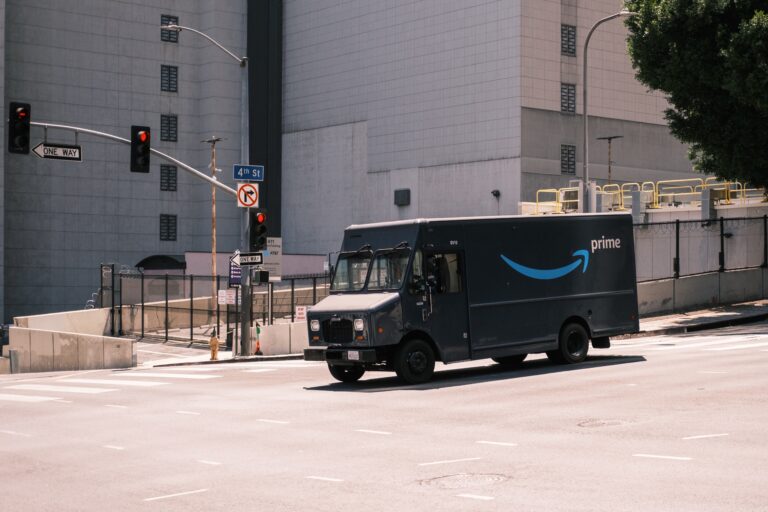
- Picking, packing and shipping are taken off your plate as a merchant – there’s not a lot of work to be done, except sending the inventory in time to Amazon warehouses.
- FBA makes products automatically eligible for the Amazon Prime badge, which is a filter many shoppers on Amazon apply while searching for items.
- Amazon (in most cases) is able to meet the gold standard of shipping items by the next day – which can elevate customer satisfaction and prompt repeat purchases. This efficiency is particularly beneficial during holiday shopping seasons when order volumes are at their peak.
- For MCF purchases made outside Amazon, buyer confidence may be increased if they see that Amazon is fulfilling their order.
- For small D2C merchants looking to make a mark and establish themselves, Buy With Prime can provide a lot of trust in the buyer’s mind about the quality of not just their shipping, but the larger brand they’re engaging with.
While these are definitely strong positives, the programs do have a few significant drawbacks for merchants to keep in mind and weigh when making a decision.
Drawbacks of Using Amazon for Order Fulfillment
- While Amazon has decided to freeze FBA fees in 2025, the charges and fees associated with FBA have climbed by as much as 96% over time.
- Research and analysis performed using Marketplace Pulse data by Cahoot shows that while the new Buy With Prime program can offer merchants savings of as much as 43% compared to Multi Channel Fulfillment, it can still be twice as expensive as FBA (where sales are restricted just to the Amazon marketplace).
- Possibly most importantly, when merchants use the Buy With Prime program, they send the customer to Amazon to checkout – where marketing or promotions may divert the buyer to an alternative (possibly cheaper) option.
- Lastly, with BWP, merchants do not have access to data about the customers on their very own website because the customer logins to their Amazon account to checkout, not through the merchant’s gateway.
Many merchants seeking to regain control of their customer data and improve their margins have tried to pivot away from Amazon FBA towards using a 3rd Party Logistics provider (3PL). 3PLs bring some of the same convenience that FBA does to merchants, but come with their own sets of limitations:
Scale Faster with the World’s First Peer-to-Peer Fulfillment Network
Tap into a nationwide network of high-performance partner warehouses — expand capacity, cut shipping costs, and reach customers 1–2 days faster.
Explore Fulfillment NetworkAdvantages of Using a 3PL for Order Fulfillment
- Using a 3PL offers merchants a more cost-effective way to manage orders outside of Amazon, rather than using a program like MCF.
- 3PLs might offer merchants possibilities for kitting and customization, which are not possible when shipping with Amazon.
- 3PLs simply take care of shipping and stay out of the engagement between you and your customers, unlike a program like Buy With Prime.
However, the staple source of revenue for a 3PL lies in shipping, and that has unfortunately become a more and more expensive activity.
Drawbacks of Using a 3PL for Order Fulfillment
- 3PLs are in the business of shipping, and various activities of the shipping lifecycle have gotten more expensive – leasing warehouses, shipping costs and the cost of labor.
- The General Rate Increases of the shipping carriers has consistently exceeded the prevailing inflation rate, while it now costs $19 / hr to hire workers for warehouses with quit rates at an all-time high. Additionally, warehouse availability is low, driving leasing costs higher.
- All these mean that 3PLs are forced to pass on increased costs to customers, eroding margins.
Conclusion
As a merchant, you might be prompted to wonder whether there’s no solution that can both help you delight your customers while costing you less and allowing you to extract more margins. Consider order fulfillment solutions with differentiated models such as Cahoot that distribute your inventory strategically in warehouses across multiple locations in the country.
By placing your product closer to the customer, it is possible to achieve same or next day shipping, while deriving cost efficiencies. Oh, and it uses ground shipping – which is better for the environment than air cargo!
Already working with a traditional 3PL but want to switch to a better network, like our peer-to-peer model? We know migrating fulfillment partners can be an uncertain and stressful process which prevents merchants from exploring superior alternatives. To make that process simpler, check out our 3PL migration guide which provides you step-by-step details on how to make a smooth, seamless switch.
The mid-year shopping season brings with it new customers and supercharged sales but also logistical complexities to overcome. It is essential for merchants to have a solid game plan for order fulfillment across all of their channels, with a strategic order fulfillment partner that offers both savings and operational excellence. It might just be the decision that provides your ecommerce rocket ship its fuel.
Frequently Asked Questions
What are some tips for optimizing my listings for Prime Day?
Optimize your listings by using relevant keywords, high-quality images, detailed descriptions, leveraging Amazon advertising options, and monitoring inventory levels to ensure you have enough stock to meet demand during Prime Day.
What are the advantages of using Amazon for order fulfillment?
Advantages of using Amazon for order fulfillment include taking care of picking, packing, and shipping, automatic eligibility for the Amazon Prime badge, meeting the gold standard of next-day shipping, increased buyer confidence for MCF purchases, and providing trust for small D2C merchants through Buy With Prime.
What are the drawbacks of using Amazon for order fulfillment?
Drawbacks include rising FBA fees, higher costs for Buy With Prime compared to MCF, potential diversion of buyers to alternative options during checkout, and lack of access to customer data for merchants using Buy With Prime.
What are the advantages of using a 3PL for order fulfillment?
Advantages of using a 3PL include cost-effective management of orders outside of Amazon, possibilities for kitting and customization, and maintaining direct engagement between merchants and customers without interference.
What are the drawbacks of using a 3PL for order fulfillment?
Drawbacks include increased costs for shipping activities, higher leasing and labor costs, and the need to pass on increased costs to customers, eroding margins.

Turn Returns Into New Revenue




